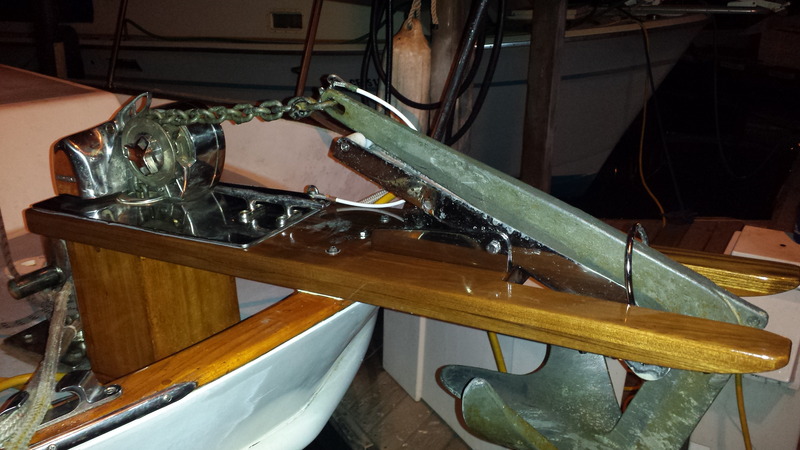Pgitug
Guru
I have read several posts with concerns of losing an expensive anchor. Since most anchorages on the east coast are less than twenty feet, doesn't everyone carry a snorkel set on board to retrieve a stuck anchor?  ️
️
If folks here can't free dive on it, often they'll mark it with a float and come back later.
Water here is murky, so sometimes just a mask will help a bit...
-Chris
Wifey B: Darn. I thought someone was talking about an insurance policy for anchors when I saw "Anchor Insurance."

I have read several posts with concerns of losing an expensive anchor. Since most anchorages on the east coast are less than twenty feet, doesn't everyone carry a snorkel set on board to retrieve a stuck anchor?️
What you're thinking of is my setup thanks to FF's suggestion. I haven't actually used it yet because we haven't been in a questionable area. The one time I used the traditional method, I estimated the line length too long and the boat passed over it a couple times in the night. Luckily I was able to get it untangled without difficulty.Anchor trip float with 1/4" double braid line between the eye on the business end of the anchor to the float. I have 50' of line and adjust the length based on the anchorage water depth.
I'm thinking of reducing the trip line length to 40' and rigging the float so the line passes thru the float eye and attaching a large shackle/weight to the bitter end so it will self set from 20' to 40' above the anchor.
I'm going to go out on a limb here and make a guess that not all boat owners are trained and physically able to dive twenty feet and struggle with a stuck anchor.
Pgitug,
Up here in New England, it's a pretty good practice when anchored in crowded anchorages, to deploy an anchor sentinel, a small float on a line attached to the crown eye of the anchor. You would normally set out enough sentinel line slightly more than the high water over your anchor. My sentinel float is painted fluorescent orange with my boat name printed on it. The sentinel shows other boaters where your anchor is, hopefully to avoid someone dropping their anchor on yours, or across your chain. If the sentinel line is strong enough, you could use it to pull a fouled anchor from the opposite direction. While anchored and fishing in craggy areas, it's a common practice here to use a sentinel. I've had to pull a fouled 22# Bruce out with the sentinel a couple of times.
I agree....
But if you are traveling outside of well travelled areas and you want to be a self sufficient cruiser.... it's a pretty major tool to have in the bag of tricks.
I'd rather dive a couple times to straighten out an anchor situation than repeated dive to untangle and saw off a line from the prop.
Or.....get some training, make a home made hooka, and take it easier for us old guys.
Anchor trip float with 1/4" double braid line between the eye on the business end of the anchor to the float. I have 50' of line and adjust the length based on the anchorage water depth.
A lot of people don't like floats in an anchorage ..... I've been doing it for decades and will not do without one.
I agree....
But if you are traveling outside of well travelled areas and you want to be a self sufficient cruiser.... it's a pretty major tool to have in the bag of tricks.
I'd rather dive a couple times to straighten out an anchor situation than repeated dive to untangle and saw off a line from the prop.
Or.....get some training, make a home made hooka, and take it easier for us old guys.
